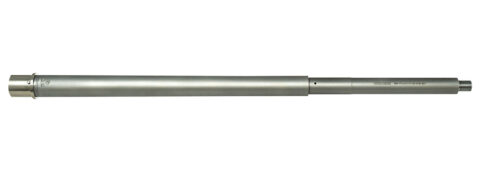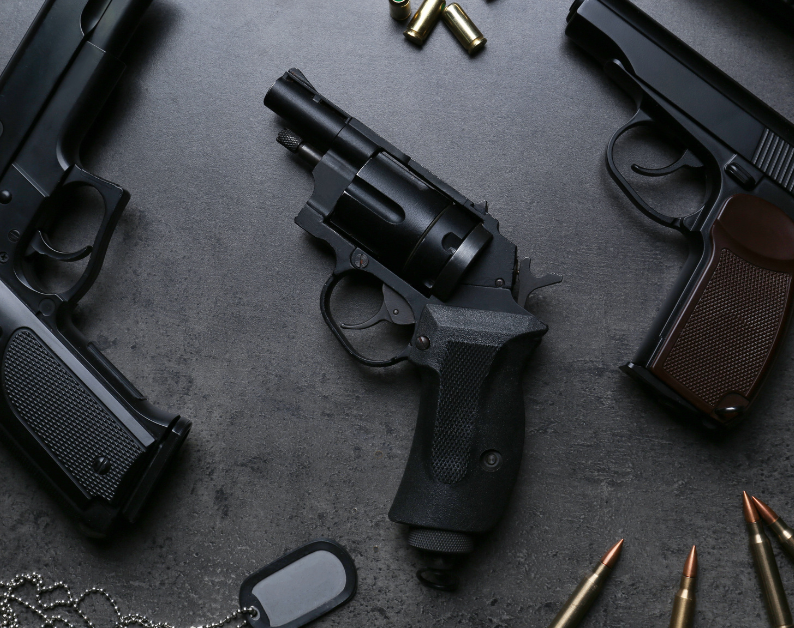Once you’ve mastered the fundamentals of sight alignment, trigger control, and basic presentation, it’s time to elevate your pistol training with intermediate dry-fire drills. At USA Gun Stores, we understand that serious shooters need progressive training methods that challenge their skills.
Dry-fire training offers unparalleled advantages for intermediate skill development: unlimited repetitions, zero ammunition costs, and the ability to focus entirely on technique without range distractions.
Essential Equipment for Intermediate Training
Before diving into complex drills, ensure your home setup supports intermediate-level training. A quality dry-fire magazine system eliminates the need to rack the slide between shots, allowing for realistic multiple-shot sequences.
Consider investing in a laser training system to track your accuracy and progress. These tools provide immediate feedback that’s crucial for intermediate skill development. If you’re looking to upgrade your training setup, quality handguns with accessory rails can accommodate various training devices. Safety remains paramount as drill complexity increases.
The Balance Drill: Perfecting Trigger Control
This fundamental drill reveals and corrects trigger control issues that limit accuracy. Place a small object—an empty shell casing or coin—on your front sight or slide. Present your pistol to a target and press the trigger without disturbing the balanced object.
The challenge lies in isolating trigger finger movement from the rest of your hand. Any lateral pressure or grip disturbance will topple the object, providing instant feedback about your trigger technique.
Progress this drill by starting from various positions: low ready, holstered, or even after target transitions. Advanced practitioners can balance the object while performing draw strokes, combining multiple fundamental skills.
Target Transition Drills
Real-world scenarios rarely involve single targets, making transition skills essential. Set up multiple targets at varying distances and heights throughout your training area.
Begin with simple two-target transitions from a low-ready position. Present to the first target, press the trigger, then transition to the second target and repeat. Focus on using peripheral vision to locate targets while maintaining muzzle control.
Advanced variations include three or four targets, mixing precise small targets with larger engagement zones. The key lies in driving the pistol with your entire upper body rather than just your arms.
Draw and First Shot Drills
Drawing from concealment adds complexity that separates intermediate from basic training. Practice your complete draw stroke: clear the cover garment, establish your firing grip, draw smoothly, and present to target.
Time your draw using a shot timer app or simply counting seconds. A sub-2-second draw to the first accurate shot represents solid intermediate performance, while advanced shooters often achieve 1.5 seconds or faster.
Vary your clothing configurations to simulate real-world conditions. Practice in different seasons’ clothing, from light t-shirts to heavy winter coats. Each configuration poses specific difficulties for grip establishment and garment clearing.
Reload Drills Without Live Fire
Reload proficiency separates competent shooters from beginners. Using empty magazines, practice both emergency reloads (slide-lock) and tactical reloads (proactive magazine changes).
For emergency reloads, start with your pistol in the slide-lock position. Practice the complete sequence: rotate the pistol, release the empty magazine, insert the fresh magazine, release the slide, and reacquire your sight picture.
Focus on consistency rather than speed initially. Smooth, repeatable motions will naturally increase in speed with practice.
The Mozambique Drill
This classic defensive drill combines precision with speed in a realistic engagement sequence. Using a silhouette target, fire two shots to the chest area, then transition to a precise headshot.
The drill simulates a common defensive scenario where body shots fail to stop a threat, requiring immediate escalation to more precise shot placement. The rapid transition from large to small target challenges both speed and accuracy.
Practice this drill from various starting positions: holstered, low ready, or even from concealment. Advanced practitioners can add movement or perform the drill with their non-dominant hand.
Multiple Target Engagement Sequences
Set up three targets and practice the El Presidente sequence: from facing away from the targets, turn, draw, and engage each target twice, reload, and then engage each target twice more.
This drill combines multiple intermediate skills: 180-degree turns, target acquisition, multiple target engagement, reload under pressure, and sustained accuracy through extended strings.
Modify the drill by varying target distances, adding no-shoot targets between threat targets, or requiring specific shot placements rather than simple center-mass hits.
Strong Hand and Weak Hand Development
Injury or circumstance may require one-handed shooting, making ambidextrous skills valuable for defensive applications. Practice all basic drills using only your strong hand, then progress to weak-hand-only shooting.
One-handed shooting dramatically changes recoil management and sight tracking. Develop a strong single-hand grip and learn to control muzzle flip without your support hand’s assistance.
Progress to one-handed reloads, which require modified techniques for magazine manipulation and slide operation. These skills prove invaluable if injury compromises one hand’s function.
Movement Integration
Static shooting represents only a fraction of real-world scenarios. Practice dry-fire drills while moving laterally, backing up, or advancing toward targets.
Begin with simple lateral movement while maintaining a sight picture on a single target. Progress to shooting while moving, then add target transitions during movement sequences.
Movement changes everything about shooting mechanics: balance, sight tracking, trigger control, and timing all require adjustment. Start slowly and build competency before increasing speed.
Technology-Enhanced Training
Modern dry-fire training systems offer sophisticated feedback and analysis. Laser training systems show exact shot placement, while motion sensors analyze trigger press quality and muzzle movement. Quality scopes and optics can also enhance your dry-fire training by providing precise aiming references.
Apps like MantisX provide detailed performance metrics, tracking improvement over time and identifying specific weaknesses in your technique. This data-driven approach accelerates skill development beyond traditional methods.
Virtual reality training systems create immersive scenarios impossible to replicate safely with live fire. These systems challenge decision-making skills alongside marksmanship fundamentals.
Building Training Progressions
Intermediate training requires systematic progression rather than random drill selection. Design sessions that build upon previous skills while introducing new challenges.
Start each session with fundamental drills to warm up, then progress to more complex exercises. End with the most challenging drills when fatigue might affect performance, simulating stress conditions.
Track your performance metrics to identify improvement areas and measure progress objectively. Consistent measurement reveals plateaus and breakthrough moments in your development.
Whether you’re preparing for competition, improving defensive capabilities, or simply pursuing marksmanship excellence, these intermediate dry-fire drills provide the foundation for advanced skill development. The beauty of dry-fire training lies in its accessibility—you can maintain and strengthen your skills year-round, regardless of range availability or ammunition costs.
Remember that dry-fire training complements but doesn’t replace live-fire practice. Regular range sessions validate your dry-fire progress and expose you to recoil management and environmental factors impossible to simulate at home.
Ready to take your pistol skills to the next level? Contact our knowledgeable team for personalized equipment recommendations and training guidance tailored to your specific goals and experience level.
Faxon Firearms 15BW7R20NTMHL5RNP3 Match Series Target 223 Wylde 20″ Bead
Faxon Firearms 15BW7R20NTMHL5RNP3 Match Series Target 223 Wylde 20" Bead Blast 416-R Stainless Barrel



